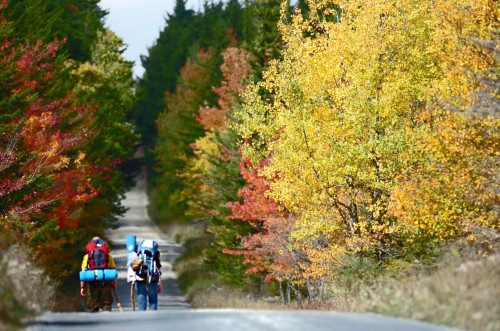
Claire Luber, 21, and Matthew Parsons, 23, both of California, walk a forest road next to the Dolly Sods Wilderness in October 2008.
CHARLESTON, W.Va. — Ever camped on Red Creek in Dolly Sods or backpacked across the rugged Cranberry Wilderness?
You can thank the Wilderness Act for those experiences.
The legislation, which led to the protection of some of West Virginia’s most wild and wonderful places, turns 50 today.
On Sept. 3, 1964, President Lyndon Johnson signed the Wilderness Act into law, creating a system for protecting wild areas in the United States that has protected over 100 million acres.
Eight wilderness areas totaling 115,000 acres are fully in West Virginia’s boundaries — Dolly Sods, Otter Creek, Roaring Plains, Laurel Fork North, Laurel Fork South, Cranberry, Big Draft and Spice Run. All are in the Monongahela National Forest.
Additionally, a ninth area — Mountain Lake — is split between West Virginia and Virginia and is located in the Jefferson National Forest.
“In a state that has a nickname of ‘wild and wonderful,’ the importance of wild places is pretty clear,” said Mike Costello, executive director of the West Virginia Wilderness Coalition, a nonprofit that advocates for permanent protection for unique natural places. “We’re a state where people are very connected to the land. These are the areas where we go to connect with that natural heritage we’re all so proud of in West Virginia.”
Legally, wilderness areas are established in existing federal land and are protected from human influence as much as possible. Motorized activities are generally banned (unless grandfathered in), but hiking, camping and similar activities are allowed. In West Virginia’s wilderness areas, hunting is generally permitted.
“That’s what a lot people go to wilderness for is to get away from fast-paced society,” said Eric Sandeno, wilderness and recreation program manager for the Monongahela National Forest. “People like the opportunity to get away. You’re self-entertained.”
Costello also made a similar statement.
“You feel that sort of escape from civilization, that feeling of wildness,” he said.
Each West Virginia wilderness area has its own special attributes, ranging from ecologically unique grassy balds in the higher elevations of Dolly Sods to preservation of headwaters or beds of rivers in other areas, as is the case in Laurel Fork…


